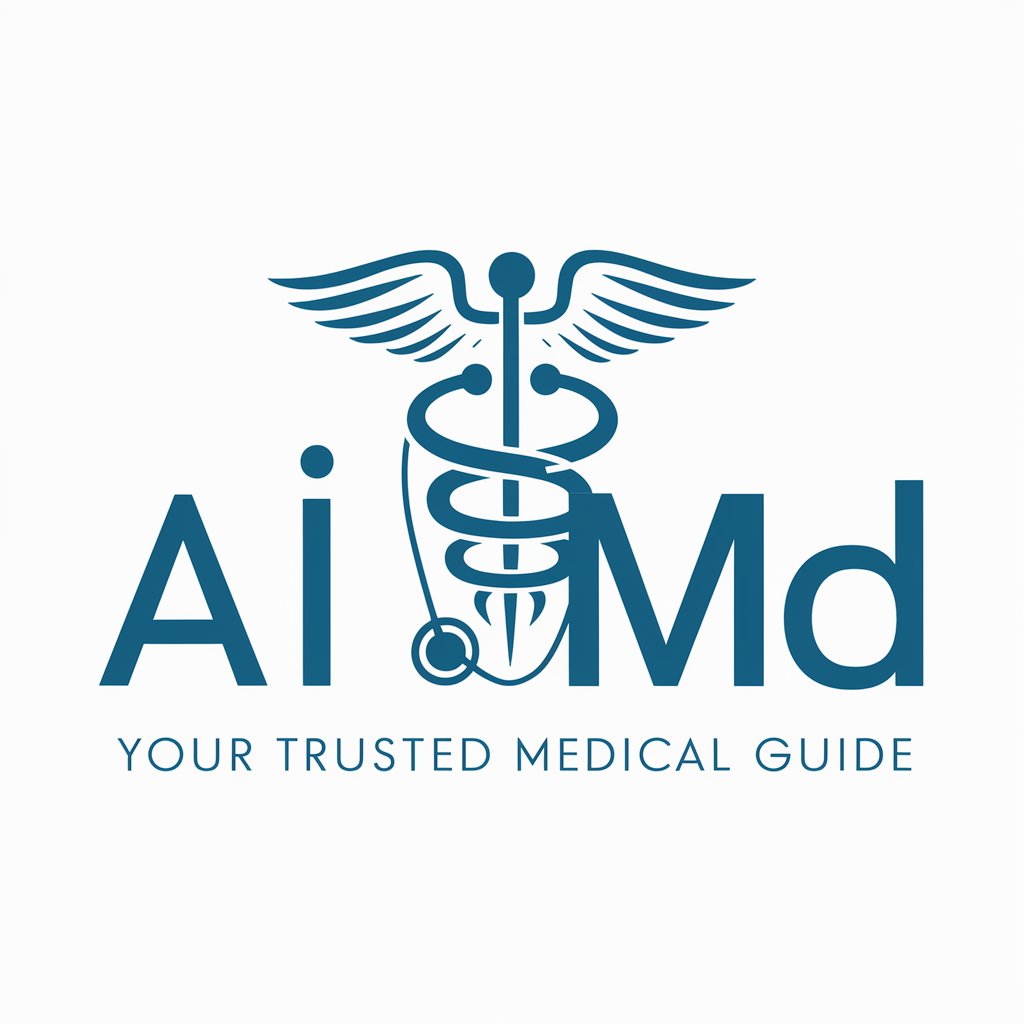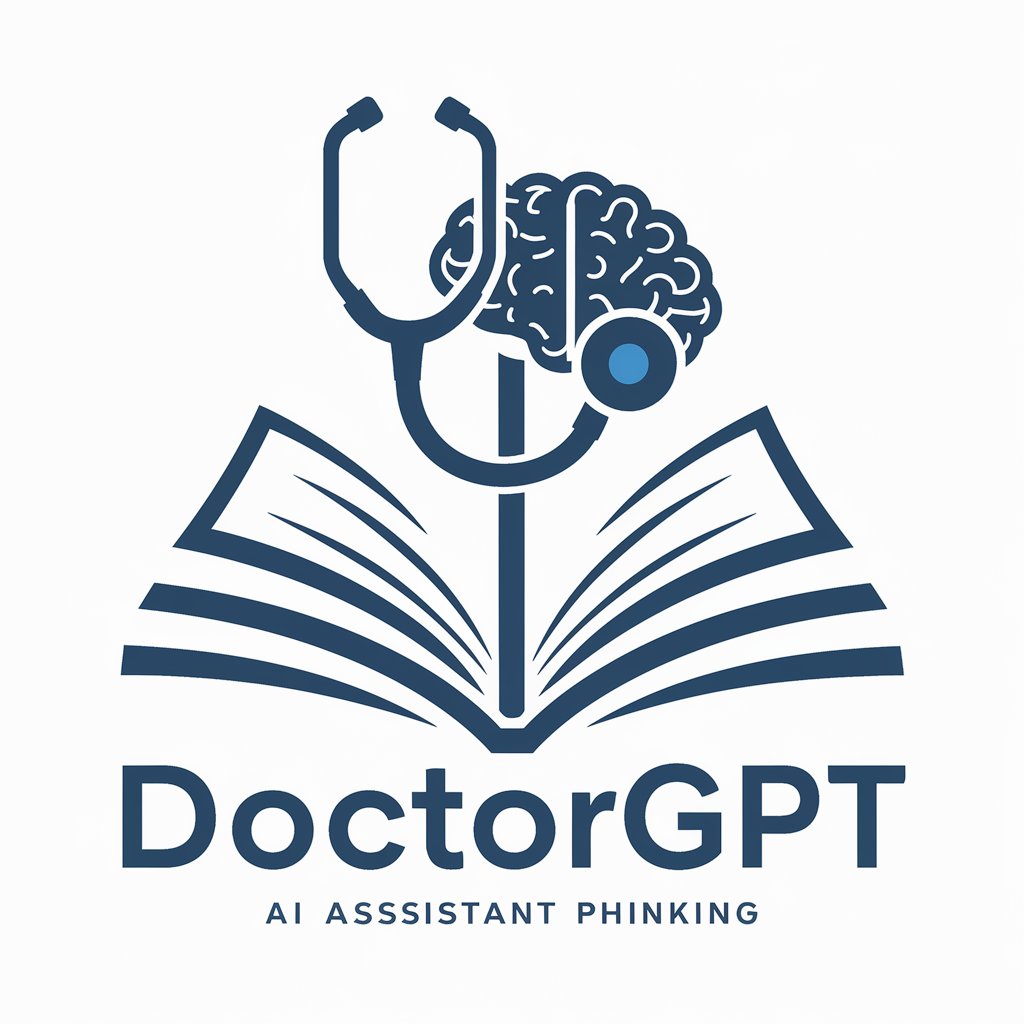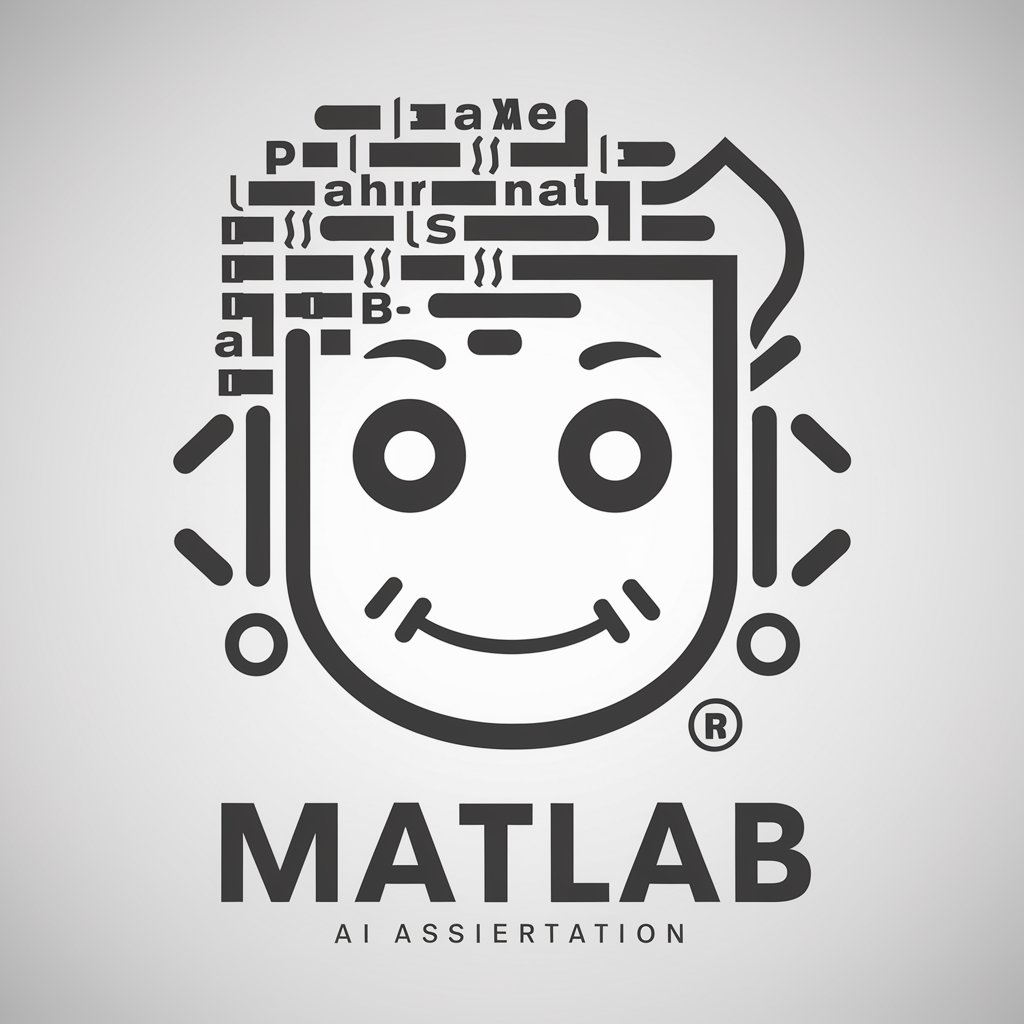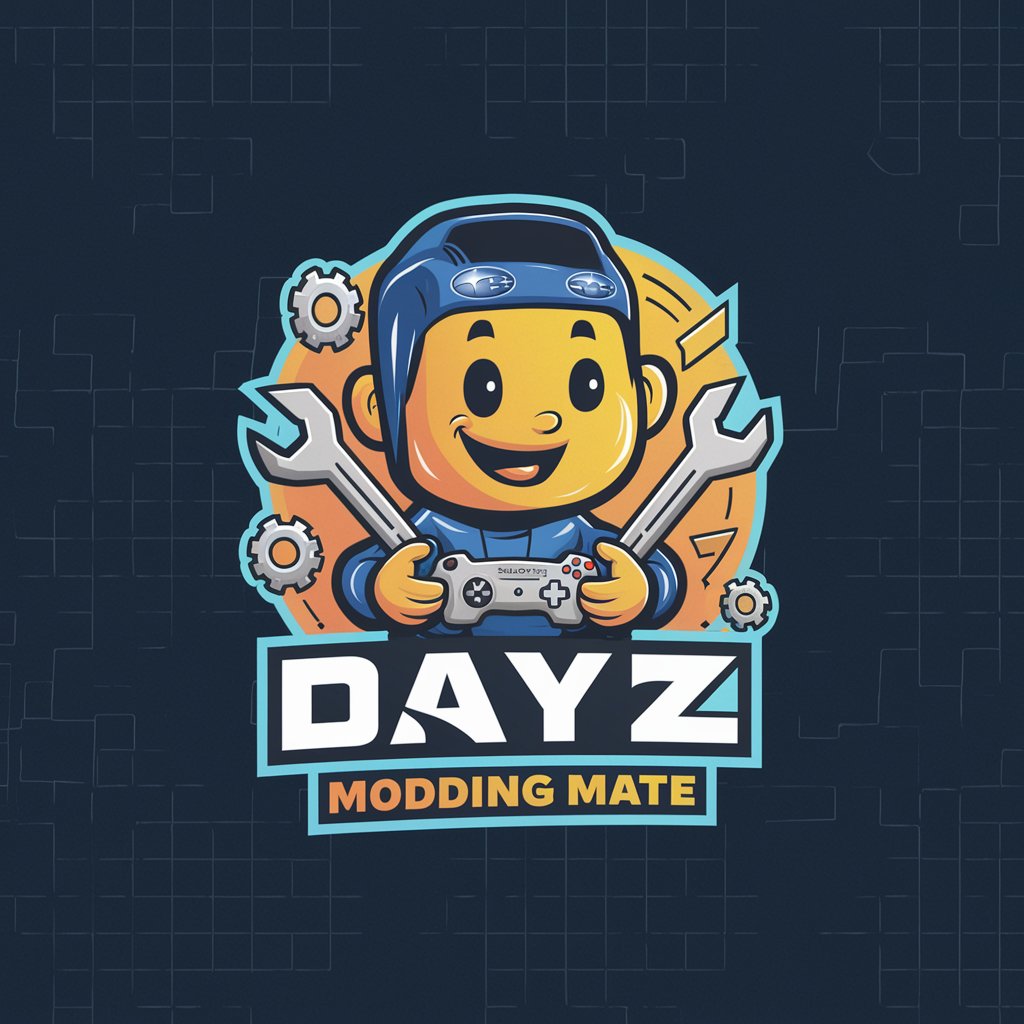
AI MD-AI-powered tool for writing, research, and editing.
AI-powered content generation and refinement.

A virtual medical doctor for general health information and guidance.
Get Embed Code
AI MD — Purpose, Design, and Core Capabilities
AI MD is an evidence-oriented clinical reasoning assistant designed to support healthcare professionals across diagnostic, therapeutic, educational, and operational tasks. Its primary design purpose is to augment clinician cognition — not to replace clinician judgment — by providing rapid synthesis of medical evidence, structured clinical decision support (CDS), and explainable reasoning tailored to clinical context. Architecturally, AI MD combines: (1) clinical knowledge representations (differential diagnosis algorithms, guideline logic, drug databases); (2) probabilistic reasoning modules for risk stratification and differential weighting; (3) natural language understanding and generation tuned for medical vocabulary; and (4) interfaces for EHR integration, structured data input, and clinical workflows. Key design principles include: (a) transparency and explainability — outputs include the reasoning chain, confidence estimates, and citations to primary sources when available; (b) safety and risk mitigation — explicit reminders that outputs are informational and must be confirmed by a licensed clinician, with checks to avoid unsafe medication or dosing recommendations; (c) evidence-based updating — knowledge componentsAI MD introduction and functions are versioned and annotated with source level (guideline, systematic review, RCT, cohort); and (d) user-centered workflow design — short actionable outputs for point-of-care use and more detailed analyses for education or research. Example scenarios illustrating core design and functions: 1) A hospitalist evaluating a patient with acute dyspnea inputs structured exam findings, vitals, basic labs, and a chest x-ray interpretation. AI MD returns a prioritized differential (pulmonary embolism, decompensated heart failure, pneumonia, COPD exacerbation) with estimated post-test probabilities, recommended next diagnostic steps (D-dimer threshold adjusted to age and renal function, POCUS checklist), and suggested initial orders compatible with local formulary and allergy status. The output includes citations to guideline recommendations and a short rationale for each recommendation. 2) An oncology pharmacist preparing a chemotherapy order uses AI MD to check drug–drug interactions, renal and hepatic dose adjustments, and supportive care needs (antiemetic prophylaxis per emetogenicity). AI MD highlights interaction severity, suggests alternative regimens, and provides references to pharmacokinetic data and guideline statements. 3) A residency program director requests an evidence summary on management of community-acquired pneumonia for an educational session. AI MD generates a concise, referenced synthesis comparing pneumonia severity scores (CURB-65, PSI), recommended empiric antibiotics by severity and comorbidity, and key trial data supporting outpatient vs inpatient management. All outputs explicitly state that they are for informational/educational purposes and do not substitute for individualized clinical judgment or formal medical consultation.
Principal Functions and Applied Use Cases
Clinical decision support (CDS) and differential diagnosis
Example
Given a structured patient presentation (age, comorbidities, vitals, focused exam, selected labs), AI MD generates a ranked differential diagnosis with estimated probabilities, suggested bedside tests to modify probabilities, and a recommended immediate management checklist (monitoring, initial meds, isolation precautions). The output includes the reasoning steps and key citations.
Scenario
Emergency department physician presents a 68-year-old with sudden pleuritic chest pain and hypoxia. AI MD produces a probability-weighted differential (PE 45%, pneumothorax 15%, ACS 12%, pneumonia 10%), recommends a Wells score calculation, immediate high-priority imaging options (CTPA vs bedside ultrasound), anticoagulation considerations if imaging delayed, and lists contraindications that warrant specialist input. This helps triage diagnostics and informs time-sensitive treatment decisions.
Medication safety, dosing, and drug interaction checking
Example
When provided with a patient's medication list, allergies, renal/hepatic function, and planned new therapy, AI MD performs interaction screening, proposes dose adjustments, calls out narrow therapeutic index concerns, and supplies alternative regimens with supporting pharmacologic rationale.
Scenario
A cardiology team plans to start a DOAC in a 78-year-old with atrial fibrillation and chronic kidney disease (eGFR 28 mL/min). AI MD evaluates appropriate DOAC choice and dose per renal function, flags interacting drugs (e.g., strong P-glycoprotein or CYP3A4 inhibitors), suggests monitoring parameters, and cites landmark trials and guideline recommendations (e.g., trial subgroup data and dosing tables).
Evidence synthesis, guideline summarization, and research support
Example
AI MD accepts a clinical question (PICO format) and returns a concise evidence summary: highest-level recommendations, summary of randomized controlled trials, meta-analytic effect sizes where applicable, and gaps in evidence with suggested approaches for shared decision-making.
Scenario
A primary care clinician asks whether to screen asymptomatic adults aged 50–75 for lung cancer with low-dose CT in a patient with 20 pack-year smoking history. AI MD summarizes guideline positions (screening eligibility criteria, absolute risk reduction estimates, false positive rates), interprets applicability to the individual patient (life expectancy, comorbidities), and proposes a brief shared decision script with absolute benefit/harm numbers to facilitate informed consent.
Target Users and Rationale for Benefit
Frontline clinicians (physicians, nurse practitioners, physician assistants, nurses, pharmacists)
These users benefit from rapid point-of-care synthesis that augments diagnostic reasoning, reduces cognitive load for complex medication reconciliation, and provides concise evidence summaries to support decisions under time pressure. Examples: emergency physicians using AI MD for risk stratification of chest pain; hospitalists using it for antibiotic selection guided by renal function and local susceptibilities; pharmacists leveraging it to prevent dosing errors. The tool improves safety, consistency with guidelines, and documentation quality when integrated into clinical workflows.
Healthcare organizations, educators, and researchers
Hospitals, clinics, and health systems use AI MD to standardize care pathways, audit guideline adherence, and reduce variation (e.g., sepsis order sets, antimicrobial stewardship). Educators and residency program directors use it to generate case-based teaching materials, exam questions, and up-to-date literature summaries. Clinical researchers and quality improvement teams use the platform for rapid PICO searches, evidence tables, and hypothesis generation. Benefits include operational efficiency, improved clinician education, and data-driven policy formation while maintaining clinician oversight for individual patient care.
How to Use AI MD
Visit aichatonline.org for a free trial without login
Go to the website aichatonline.org, where you can access a free trial of AI MD immediately. No login or ChatGPT Plus subscription is required to begin using the service.
Explore the available tools and features
Once on the site, familiarize yourself with the various features that AI MD offers, such as document analysis, summarization, content generation, and specialized tools for writing or medical research.
Select your usage scenario
Choose the task you want to perform—whether it’s generating academic content, researching a medical topic, or improving writing quality. This helps AI MD tailor its responses to your specific needs.
Input your data or queries
Enter the necessary input for your project. This could be a text document, a set of questions, or specific research data. Be as detailed as possible to get the most accurate and useful outputs.
Review and refine the output
How to use AI MDOnce AI MD processes your input, review the generated output. You can tweak or adjust it for clarity or further precision. The tool offers a refined, iterative approach to perfect your work.
Try other advanced and practical GPTs
General Use📌
AI-powered assistant that drafts, edits, and clarifies

GPTofGPTs
AI-powered solutions for every need.

特許図面風イラストメーカー
AI-powered tool for precise patent drawings

AutoExpert (Dev)
AI-powered solutions for seamless workflows

文案GPT
AI-powered content creation at your fingertips.

DoctorGPT
AI-powered medical insights and explanations.

DevOps Guru
AI-powered insights for smarter DevOps management.

Best GPT SEO Copywriter by Max v.1.0
AI-powered SEO copywriting that converts

Power point
Create smarter presentations with AI.

상품명 ,상세페이지 최적화
AI-powered optimization for product pages.

メルカリ出品アシスタント「Mimiちゃん」
AI-powered listing optimization for メルカリ.

Tarot cho người Việt
AI-powered Tarot for personalized guidance

- Academic Writing
- Content Generation
- Document Summarization
- Text Refinement
- Medical Research
Frequently Asked Questions about AI MD
What is AI MD, and how does it work?
AI MD is an advanced AI-powered platform designed for a variety of tasks including document summarization, academic writing assistance, and research automation. It uses sophisticated algorithms to process and generate human-like content based on user input, making it an ideal tool for academic researchers, writers, and professionals in various fields.
Can I use AI MD without a subscription?
Yes, you can start using AI MD for free through a trial version available on the website. No subscription or login is required to access the initial features, making it easy for users to test the tool before committing.
What are some common use cases for AI MD?
Common use cases include academic writing (creating papers, summaries, and research proposals), medical content generation (research reports, patient information sheets), content creation (blog posts, website copy), and improving existing text (editing, grammar correction, and style refinement).
Is AI MD suitable for professional use?
Absolutely. AI MD is designed to meet the demands of both individual and professional users, providing precise and well-structured outputs for research, writing, and documentation. Its capabilities are flexible enough for various professional fields, especially in academia, medicine, and business.
How accurate are the outputs generated by AI MD?
The outputs produced by AI MD are highly accurate, but the quality depends on the clarity and specificity of the input provided. While the tool is designed to generate coherent and contextually relevant content, it’s always advisable to review the output to ensure it aligns with your specific requirements.






